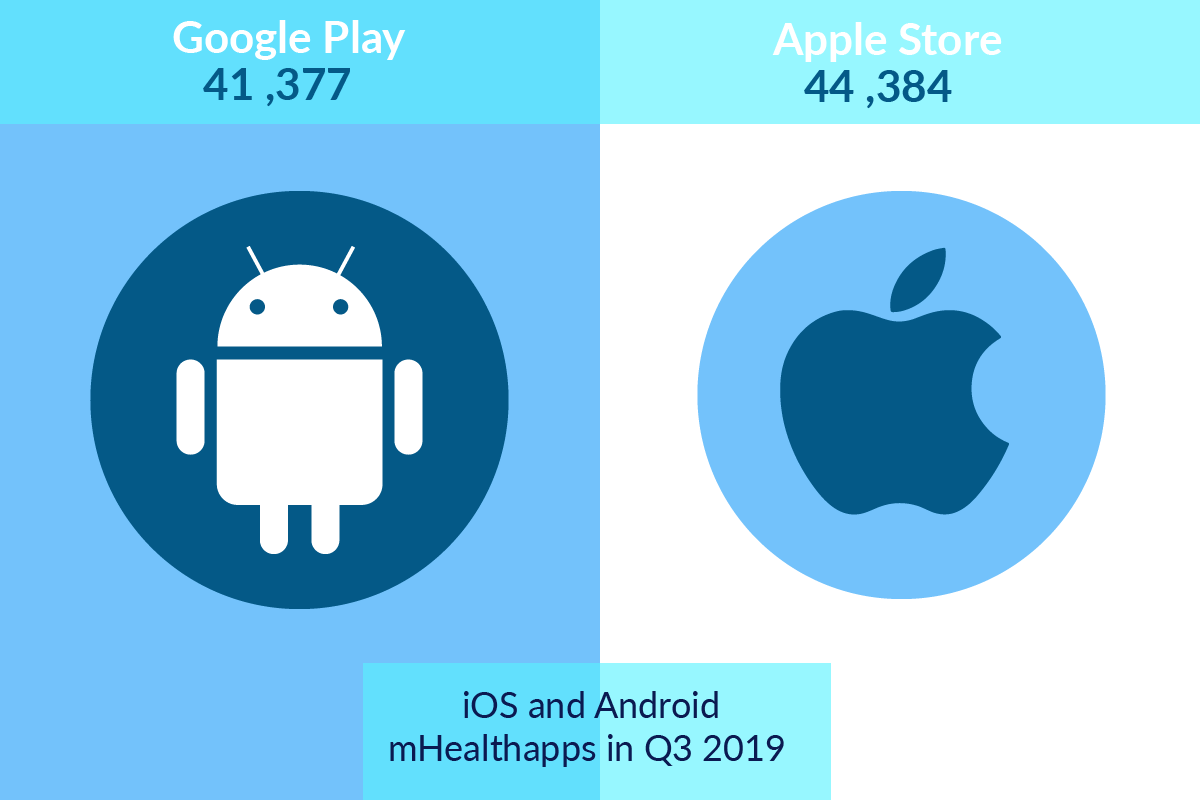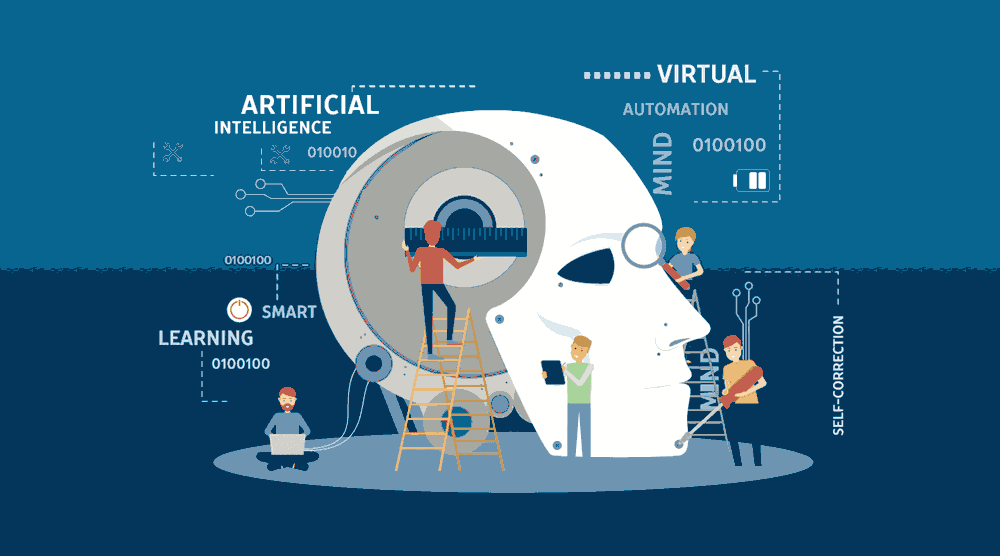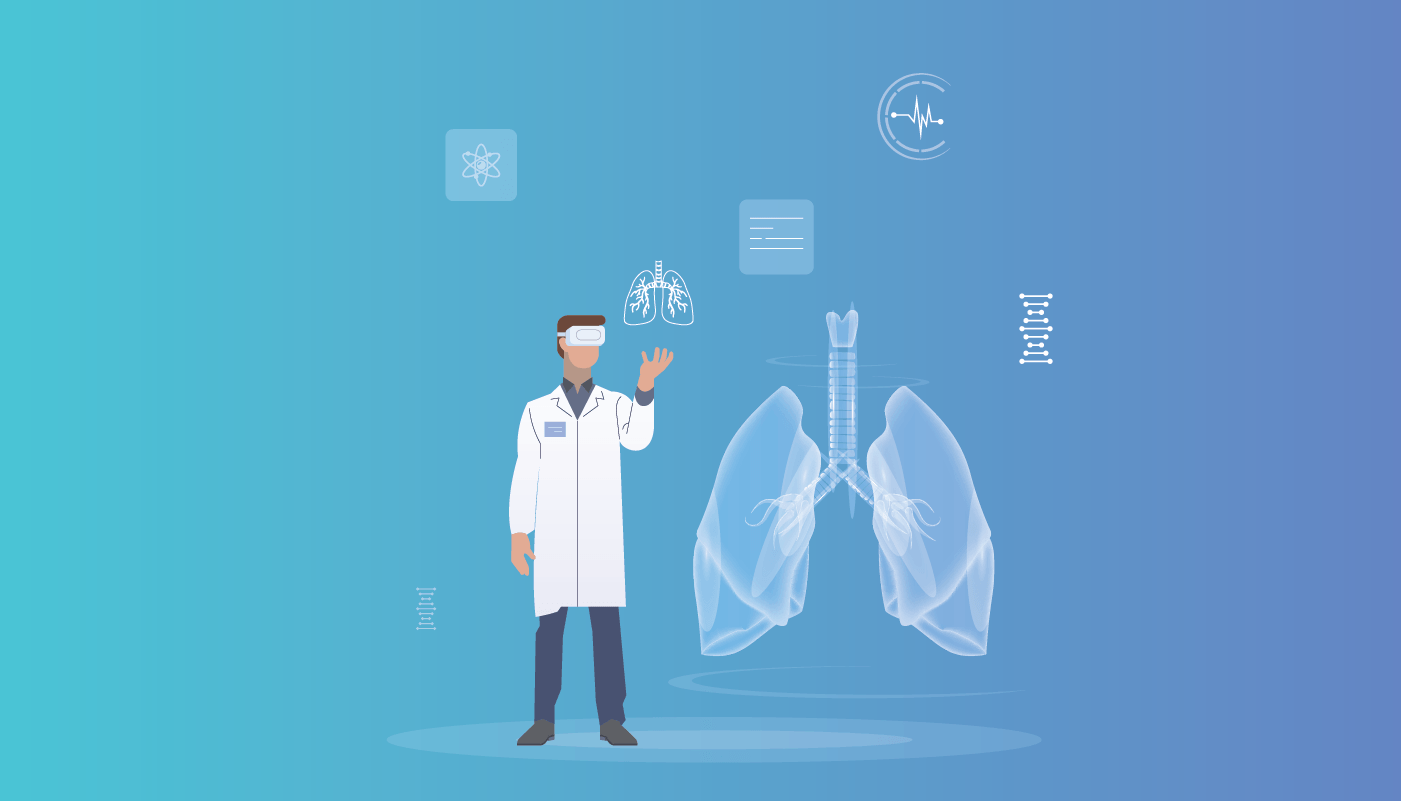Technologies are constantly evolving: new devices, apps, and functions appear almost every day, making this world a better place. The same is happening in the healthcare industry, which has managed to move away from the standard idea of waiting in the hallway for a doctor’s appointment. We are all seeing rapid growth in innovation and probably you won’t find an industry that has such a profound positive impact on the whole of humanity as healthcare.
Health is the most crucial asset we’ve ever had, and our well-being is key to other accomplishments. That’s why more and more resources will be devoted to making our lives not only longer but also qualitative. This is where healthcare app development helps move away from the traditional doctor-patient relationship. The symbiosis of technology and healthcare gives us a perfect chance to bring the industry to the next level and achieve the goals of longevity and good physical and mental states.
Contents
What’s a Healthcare Application?
How Many Healthcare Apps are in the Market?
How to Create Effective Health Applications?
What are the Main Stages of Developing a Healthcare App?
What to Remember When Creating a Health Application?
What’s a Healthcare Application?
The rapid growth and accessibility of technology, especially mobile phones, provided us with an ample opportunity to take care of our health with the help of multiple applications.
A healthcare app is an application that helps users (doctors, patients, and anyone concerned about their health) keep track of well-being with the aid of personal devices, mostly smartphones. Mostly, such applications are developed with a view to bringing value and health benefits to their users.
How Many Healthcare Apps are in the Market?
Acknowledging the importance of technology in reaching health-related objectives, companies throughout the globe are building applications that are accessible to users via their mobile phones. The term mHealth or mobile health is a portmanteau that is gaining its popularity among users. It refers to the usage of smartphones in terms of medical care and public health services.
As stated by Statista, the number of Google Play mHealth apps amounted to 41,377 in the third quarter of 2019, and 44, 384 healthcare applications at Apple Store during the same period. And the numbers are going higher with each quarter.
How to Create Effective Health Applications?
If you’re developing a medical app from scratch and for the first time with the help of your own resources, you’re more likely to encounter quite a lot of obstacles. That’s why you’d better consider contacting a company that has a considerable and practical experience in creating such applications. For instance, at LITSLINK we’ve developed quite a few healthcare apps, such as Flaredown, ShiftRX, just to name a few.
Still, when it comes to the development of any mobile application, the client doesn’t know what’s going on behind the curtain. But fear not as we’re going to shed some light on what’s happening when you have only an idea for a revolutionary medical health app but don’t know how to implement it.
Types of Healthcare Apps
The rapid growth and accessibility of technology, especially mobile phones, provided us with an ample opportunity to take care of our health with the help of multiple applications.
A healthcare app is an application that helps users (doctors, patients, and anyone concerned about their health) keep track of well-being with the aid of personal devices, mostly smartphones. Mostly, such applications are developed with a view to bringing value and health benefits to their users.
If we look at the different types of mobile healthcare solutions available today, we see a variety of options gravitating towards three audiences: patients, healthcare staff, and administration.
For doctors:
- medical calculators;
- calendars and reminders for patient appointments;
- pharmaceutical directories;
- online training and communication with colleagues for consultations;
- appointment management.
Such mobile health apps for the clinic will greatly simplify the work of doctors, optimize it and make it comfortable.
For patients:
- symptom control and medical reference books;
- reminders, alerts and notifications;
- control of chronic diseases;
- health applications for remote communication with doctors;
- fitness training;
- weight loss apps.
What are the Main Stages of Developing a Healthcare App?
The order of mobile app development stages may vary from company to company as well as it can be altered according to specific requirements of each product. Nonetheless, we have singled out the following steps that should be undertaken to create a full-fledged application:
Mobile Platform Defining Stage
No matter what kind of application you’re looking to create — personal health record app, med diagnosis app, prescription apps, or medical apps for doctors, it would still be immensely helpful if you knew what kind of mobile platform you want to target. The most popular mobile operating systems that you might want to target are Android and iOS. Thus, you can go for native development, which means building an app for a particular platform. Also, if you want to choose both OSs, mobile cross-development would be the best option.
Business Analysis Stage
Once you’ve figured out what kind of platform is the key for your application, we can get down to business analysis.
Business analysis or BA is one of the most vital stages of development. No one wants to release an app that will be unpopular and, which is more, will have no demand. The reason behind might well be a dissonance between what the user needs and wants (moreover, users do not always know what they want.) BA assists in riddling out what actually the user’s needs are and how to satisfy them with the help of your application.
UX/UI Design Stage
Look and feel is important. Popular health apps always have both — they look good and they are extremely functional and helpful. At this stage, UX and UI designers don’t only create appealing visualizations (mockups) for the future app but also determine how the app works and how the end-user is going to interact with it.
Product Team Assembling Stage
When the main features are identified and you already have a design for the app, now it’s time to assemble a product team that would be responsible for the entire app development process. When building an app that brings value to its users, teams shouldn’t be siloed. It means that it must be comprised of various talents — engineers (a team lead, middle, and junior developers), a project manager, a designer, etc.
Tech Stack Stage
The team is assembled, the design is ready, and all the features are defined, it’s time to choose the right tech stack. If you decided to have an application that would target both iOS and Android users, you can choose a cross-platform development tool such as React Native, Flutter, Ionic, etc. But if you made up your mind to opt for native development, Swift or Objective-C for iOS and Java for Android.
Development and Testing Stage
With a team assembled , tech stack chosen, and all the necessary information at fingertips, it’s high time for actual development of an application. If you want to, you can have your app created in one go and have it delivered to you in its final form. But you can have a proper look at MVP, which we’re going to consider further on.
At this stage, the team is working on making your health app idea into reality by dealing with the app architecture, communication with the client, etc.
Testing of an application is better to perform with the aid of other services. For instance, TestFlight is perfect for testing iOS applications. App Center, HockeyApp will perfectly do for Android app testing.
Minimum Viable Product
Even though you can skip this stage and have a fully-fledged application built in one go, we’d still recommend considering a minimum viable product (MVP). In a nutshell, an MVP is a product that has minimum features that can satisfy early users. Besides, it can easily help you validate your initial app idea and in case it proves to be invalid, you’ll have a significant chance of pivoting it before creating it fully.

To fully understand MVP and how a minimum viable product can benefit you a lot, you can read here.
Examples of Successful Healthcare Apps
The healthcare industry is attractive to aspiring entrepreneurs. The statistics show that the Google Play library has over 43,000 medical applications. This means that the idea of creating a healthcare application has inspired many.
On the one hand, this is good because it is in demand, but you will also be dealing with competition. You are more likely to be successful if the product is unique, interesting, and naturally useful. This is what the most popular healthcare startups are doing. Innovative ideas improve users’ lives. Below is an overview of the most popular apps you can inspire to launch a successful medical app for iPhone or Android health app.
If you have an idea of connecting people with the same health conditions, Healthread is a social network where people with the same health interests can look for counterparts to share their health stories and find support, understanding, new friends, or even start a new way of life.
Embleema is a platform that has no analogues in the world. Embleema is an interoperable blockchain network with America’s insurance system that allows patients to share their medical data with researchers. What is unique about a medical app? For the provision of data, patients are paid in cryptocurrency, and the researchers have at their disposal a huge data bank, on the basis of which new drugs will be created. Thus, both users and researchers are in the black.
Medscape is one of the most informative resources for both physicians and non-specialists. Medscape is something like a universal medical reference book, which includes original articles on various topics, news from the world of medicine, annotations to drugs, tests for their compatibility, etc. Thanks to a convenient and simple interface, an excellent search option and a database that covers a huge number of monographs, clinical images, video tutorials on research and manipulations, more than 7 thousand drug reviews, drug instructions, Medscape has received recognition from many practicing doctors around the world.
BenevolentAI is an app which represents a world in which no disease is left untreated. The app combines medication and artificial intelligence to find ways of treatment for currently incurable diseases: glioblastoma, Parkinson’s disease and others.
K Health uses machine learning algorithms to analyze anonymous medical records from patients. The user can share their symptoms and the system will offer a list of possible diagnoses. At the same time, the application reminds us that self-medication can be dangerous and it is worth contacting a specialized institution to confirm the diagnosis.
Read by QxMD is the app that organizes all your medical literature. Using a journal format, the program allows you to read and download research, journals and articles from a wide variety of sources (open access journals, Pubmed and documents from relevant institutions). With open access to a huge amount of free content, doctors can easily find the latest news in their specialty and organize all the available data.
Doximity is the largest social network for doctors in the United States (about 40% of medical professionals use this application). Through a mobile and web platform, physicians can use Doximity’s functionality to securely share HIPAA data, send faxes, read personalized healthcare news, and organize careers and jobs.
Must-Have Features in a Health Application
Today, living a healthy lifestyle is much easier than ever. But if you want to join the market leaders, you need to navigate the current trends in this area, which according to statistics, will only gain popularity in the future. To build an effective healthcare app means to include features that engage users and offer them tangible benefits. The primary goal of the patient care applications is to make life easier for patients and clinics. There are a variety of must-have features that every successful medical care app needs to have.
- Video conferencing options. It would be great to take advantage of telehealth solutions. Telemedicine involves the use of telecommunication technologies for the exchange of medical information. Such medical apps provide their users with the ability to make virtual appointments or monitor patients remotely.
- User/Doctor Profiles. Obviously, you need these parameters to make your life easier and they should be easily accessible and user-friendly.
- Booking options. Any health management app must have this feature which allows users to book virtual meetings and provide online consultations.
- Online prescription option that improves doctor-patient communication. The ability to submit online prescriptions and check the availability of essential medicines nearby
- Dashboard option. This option is widely used in health and fitness applications. With this feature, users can easily track your activity and their health indicators.
- Share progress option. This is a must-have feature in fitness apps that allows users to share their workout results.
- Symptom checker makes users feel more comfortable. The user can track symptoms and find out what problems they may be associated with.
- Data protection. Mobile security is an important issue in every area. Obviously, no one wants to lose their personal information. Technologies are evolving and new ones are constantly emerging that allow users to more effectively protect personal data.
- Geolocation. This is useful when users need to find addresses of hospitals, pharmacies, read local health news, make an emergency call, or learn more about emergencies in the immediate vicinity.
- Communication. Any healthcare application developer must also integrate communications to create a robust and feature rich medical health app. It would be great if your doctor patient app chat included a standard mobile chat, chatbot, video chat, or booking system.
- Smart devices. Recently the market for smart devices began to actively develop again. People like to wear motion sensors or fitness trackers to keep track of their health. Hence, it is an attractive investment niche. For example, Google has begun developing non-dissolving capsule sensors that can probe the body from the inside. The patient only needs to swallow the pill, and it will pass through the body, filming videos and taking photos of the required areas.
Apart from these options, you can also add an AI integration option, a reminder option, blockchain integration, and a patient privacy option.
HIPAA and ADA Compliance
One of the most defining things each medical app must have is compliance. mHealth applications store quite a lot of sensitive information about the user: his or her health and mental conditions, medical diagnoses, checkups information, test results, and other medical records. That’s why it’s highly important to keep data protected.
Here some laws that your app must be compliant with:
HIPAA (Health Insurance Portability and Accountability Act) is a law that protects health information and to keep it privately whether it’s kept electronically or on paper. It gives you the right to have a copy and see your medical records or if you find there some discrepancies, you can always ask to correct them. Moreover, you have to know how your personal information is used. At the moment, it’s totally fine for doctors to share your data with one another, but it’s not OK for the third party to disclose it to your boss, for instance.
In addition, HIPPA offers valuable information for developers who are building a health application.
ADA is another act that you must consider when creating an app. For instance, you need to comply with ADA when building an inclusive social media platform.
ADA (The Americans with Disabilities Act) is a law acts against the discrimination of people with disabilities and ensures that companies have accessibility standards. It also concerns medical applications.
Wrapping Up
Developing an mHealth application that brings value to its users is not an easy task. It involves quite a lot of steps. First of all, you have to figure out what kind of OS you want to target — iOS, Android, or both. Then a careful analysis of your business follows. Moreover, you need to have a team of professionals that encompasses many talents — technical and creative skills. All in all, it requires prosound knowledge, expertise, and experience. In this case, to help you create an efficient app, you can contact mobile application development agency to get first-class software development services.





![Unlocking Competitive Edge: Harnessing the Potential of Machine Learning Across Various Industries [Includes Infographic]](https://litslink.com/wp-content/uploads/2021/03/featured-machine-learnig-applications_1.jpg)
